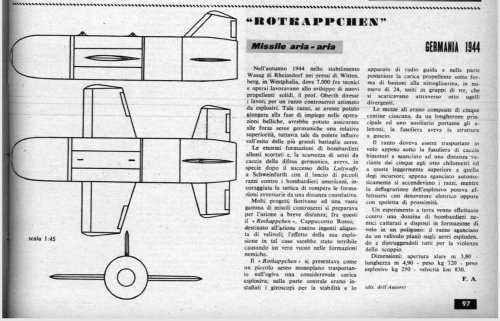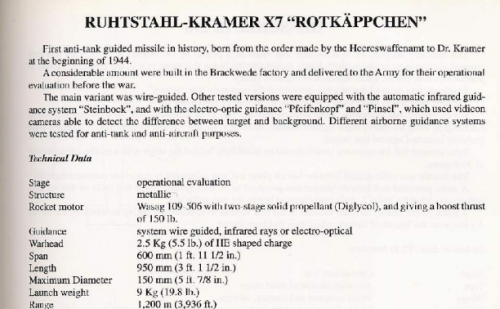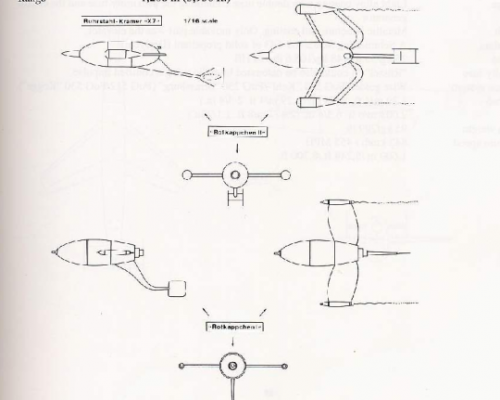lippischh
ACCESS: Secret
Since this source hasn't exactly been the most credible. I'm putting this topic in Speculative Projects as caution.
From "Oltre il Cielo 1958 09"
Crude translation from Google Translate :
From "Oltre il Cielo 1958 09"
Crude translation from Google Translate :
In the autumn 1944 in the plant Wasag in Rheinsdorf near Wittenberg, in Westphalia, where 7,000 technicians and workers were working on developing new solid propellants, the prof. Oberth directed work on a powered counter-aircraft rocket from explosives. Such a rocket, if he could to reach the phase of employment in the war operations, could have assured to the German air force a relative superiority, however such as to be able to influence on the outcome of the biggest air battles. The huge formations of escorted allied bombers and, the scarcity of airplanes from hunting of the Germanic defense, had, in especially after the success of the Lufiwaffe at Schweinfurth with the launch of little ones rockets against the American bombers, encouraged the tactics of breaking the opposing formations from a cautionary distance.
Many projects flourished and a vast one range of counter-aircraft missiles was being prepared for short distance action; among these the "Rotkappchen", Little Red Riding Hood, for action against large aliquots of aircraft; in this case the effect of its explosion would have been terrible, causing a real emptiness in the enemy formations.
The "Rotkappchen" presented itself as a small monoplane plane carrying a considerable charge on the ogive explosive; in the central part were installed gyroscopes for stability and the radio guide apparatus and at the rear the charge. propellant in the form of nitroglycerin sticks, in number of 24. joined in groups of three, which were discharged through eight nozzles divergent. Half wings were composed of five ribs each, from a main spar and an auxiliary bearing the ailerons; the fuselage had the shell structure.
The rocket was to be carried in flight hanging under the fuselage of hunting twin-engine and unhooked at a distance ranging from five to eight kilometers and at a slightly higher altitude than that of the raiders; as soon as the rockets were automatically unhooked, the explosions could explode with an electric detonator or with a proximity spool.
An experiment on the ground was carried out against a dozen enemy bombers captured and arranged in formation of flight in a polygon: the rocket unhooked from an aircraft he flew on the planes exploding and destroying them all by violence of the outbreak
Dimensions: wingspan 3.80 m
length m 4.90 weight kg 720 - weight
explosive 250 kg km 830 km.
(author's description)



